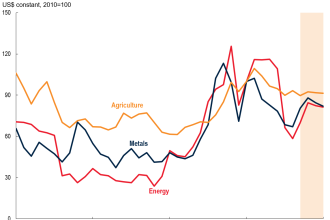If you want to know how to trade foreign currencies and find a fortune by doing this you need a detailed understanding of the political and economical situations of individual countries and specific markets, but if you do not study the basics of trading first, it may result in trading losses for you. The fact is that first-time traders often struggle with their first steps as they simply do not know how to use leverage. If you want to know how much leverage is right for you, read the article and let us help you find out.
What is leverage?
Leverage basically is the usage of borrowed funds that can increase your trading position. A good offer may not be available for you if you use only the funds you have but with leverage, you can find fortune but it is important to choose the proper amount of funds you are going to borrow and the fortune that a specific trade can bring you. Otherwise, you will end up losing your funds and in fact, it is a very common problem for beginners and for experienced traders too.
What Level of Leverage Should a Beginner Choose?
In the past, it was possible for brokers to offer significant leverage ratios as high as 400:1. To say in more understandable words, the right number of leverage matches your deposit, and the left number is how many times it is multiplied to get an amount of money you can control. It means that if a trader has chosen a leverage level as high as 400:1 with only a $50 deposit, a trader could control $20,000 in currency on the global forex markets.
Since 2010, the maximum level of leverage that brokers could offer was limited because of the drastic losses that traders experienced. The ratio was fixed to 50:1, which means that with the same $250 deposit, traders can control $12,500 in currency, which still is a high number. Most of the brokers also have limited, for instance, FBS minimum deposit is $1 which can not bring you high leverage offers.
The question is which pass should a beginner choose when it comes to starting trading: Select low leverage like 5:1 or take a risk and set the leverage to 50:1? To find the answer to that question let’s take a look at some examples which show us the amount of money that can be lost or gained while trading with different levels of leverage.
Examples of Using The Maximum Level of Leverage
Lots are trade sizes in the world of forex and you will see three basic kinds of lots on the market: a micro lot which is 1000 units of the base currency, a mini lot which is 10 000 units of the quote currency, and a standard lot which is 100 000 units of the quote currency. Movements are measured in pips and every movement requires a different change in units depending on which lot you have.
Now imagine that you have $10 000 cash on your account and you decided to use the highest level of leverage which is 50:1. It means that you can control $500 000 which is five standard lots in forex. In that case, each pip movement will cost $50. If the trade goes fortunate for 50 pips, it means that you would gain $50×50 pips which is $2500, but if it goes against you 50 pips then you will end up losing $2500 which is 25% of the total money on your trading account.
Examples of Using Lower Level of Leverage
Now imagine that you choose a less risky way and instead of selecting the maximum level of leverage you selected lower leverage like 5:1. If you have $ 10 000 cash on your account it means that you are able to trade $50 000 in the world of forex. It would be five mini lots and each pip would make a change as big as $5 since one pip for the mini lot is a $1 change.
If the trade goes against you for 50 pips it means that you will lose $250 as $5×50 pips equal to $250. It would be 2.5% of the total money on your account, but if the trade goes fortunate for 50 pips you still make only $250.
How To Choose The Leverage Level Properly
If you are still learning how to trade properly or you are just conservative and do not like taking many risks, the lower level of leverage like 10:1 or 5:1 will be more suitable for you.
However, there are some basic rules that most of the successful traders follow and it helps them to avid drastic losses:
- Select the low level of leverage if you do not exactly know what you are doing.
- Protect your capital and reduce downsides by using trailing stops.
Trailing stops are very important for several reasons: first of all, it helps reduce emotional background while trading and allows you to think with a clear mind. Secondly, while using the limit stop, you can continue to learn about the currencies but it is also noteworthy that sometimes trailing stops result in losses if a trade fails.
- Limit your capital on each action taken to the minimum percentage of the total trading capital.















